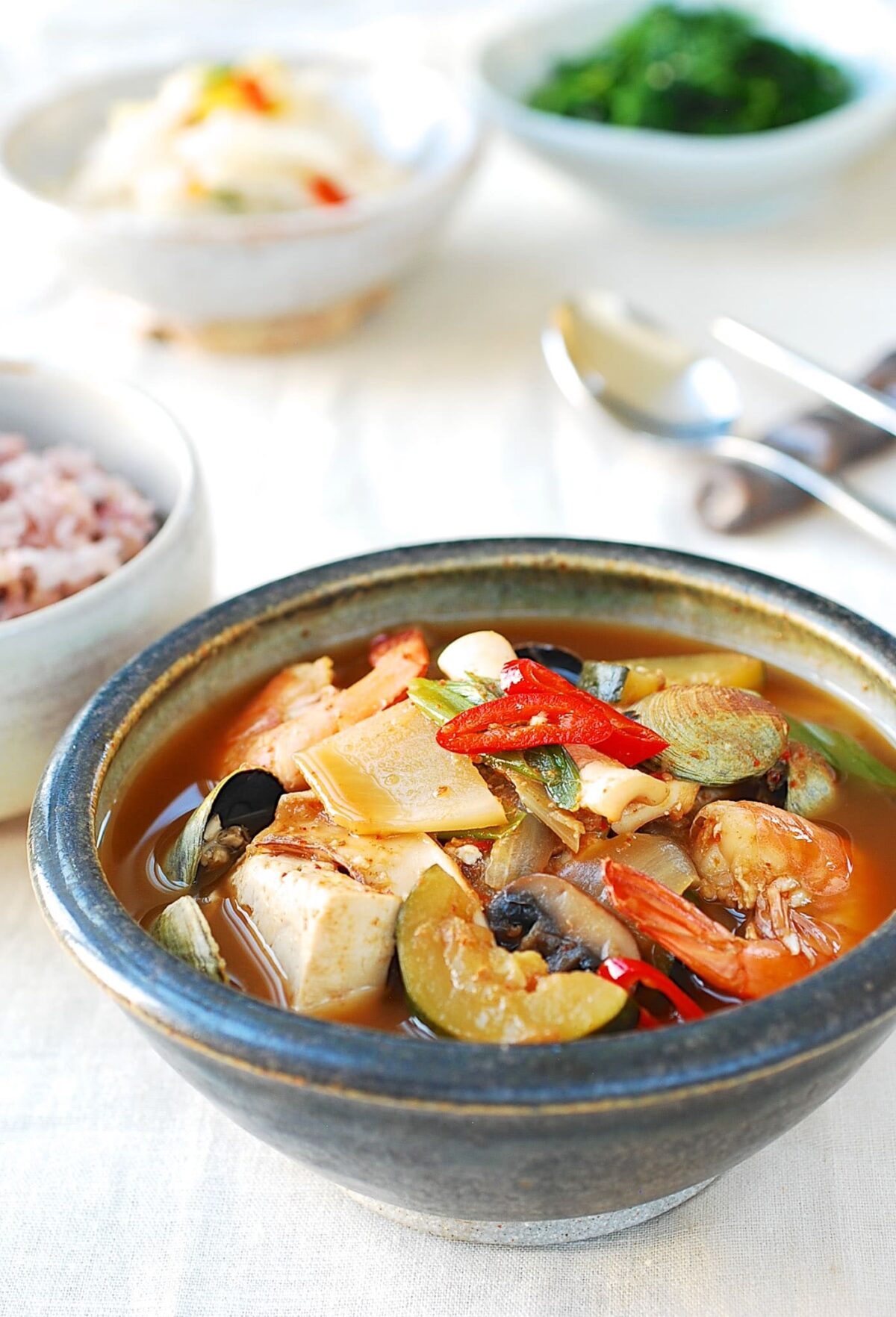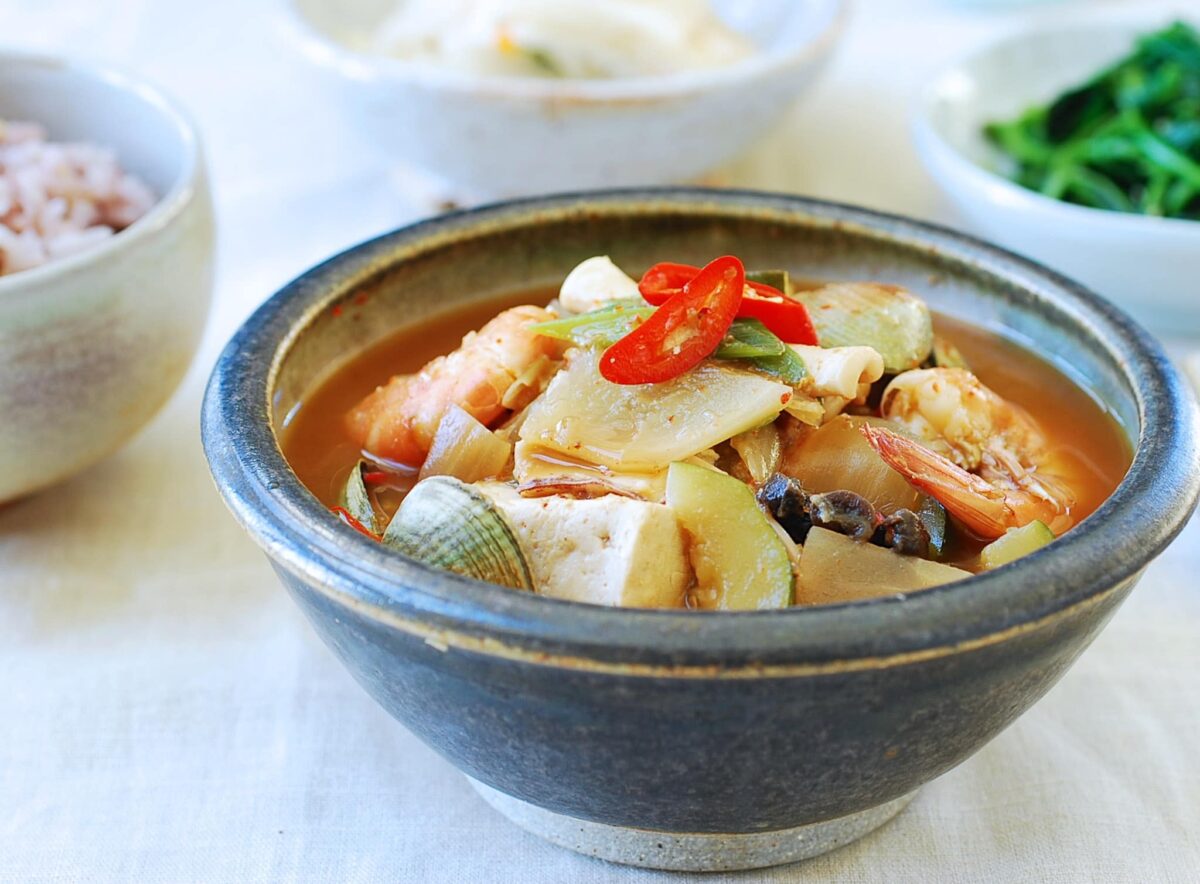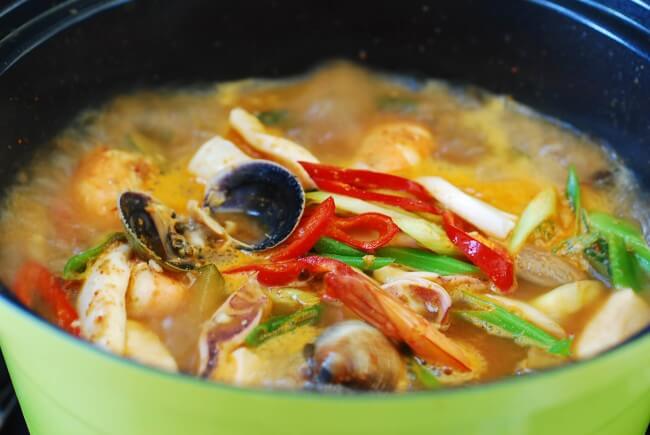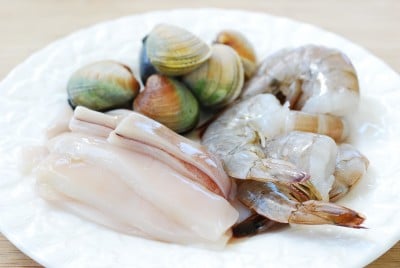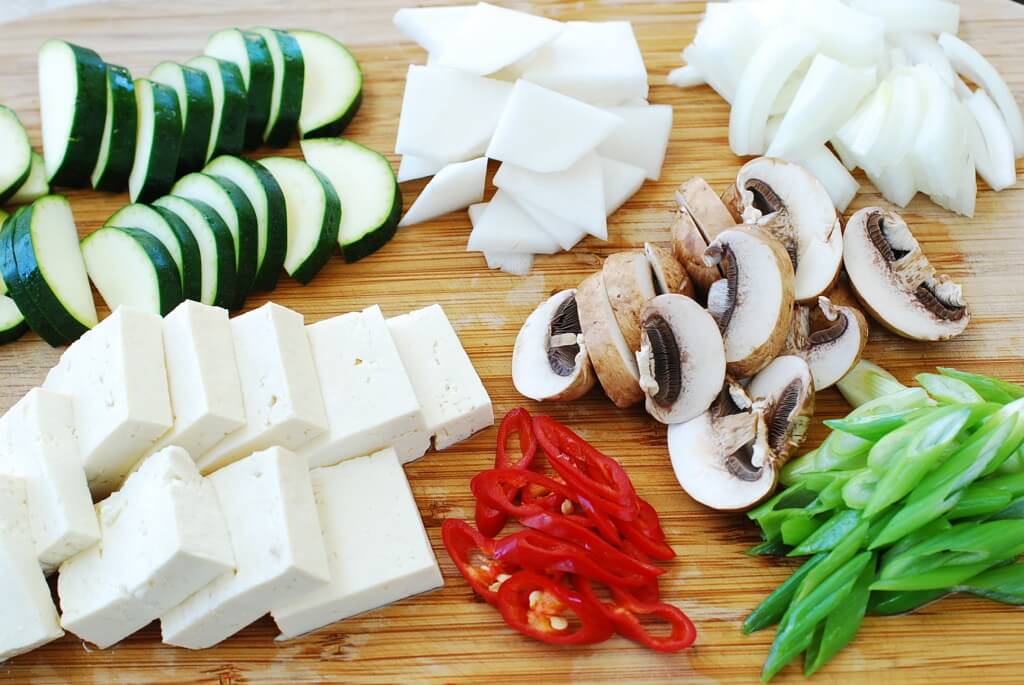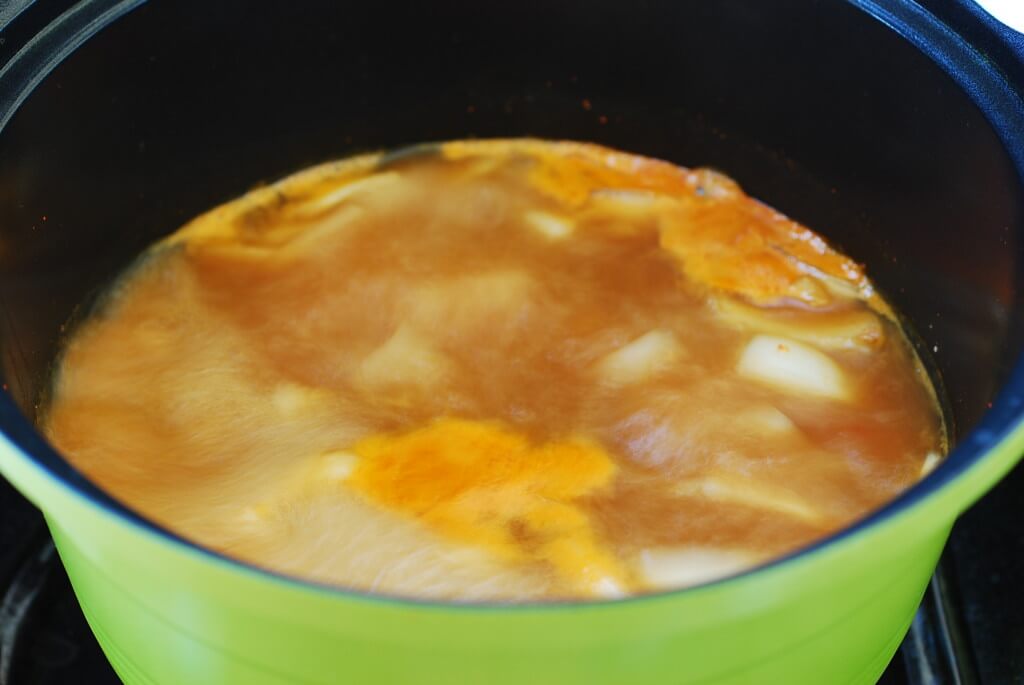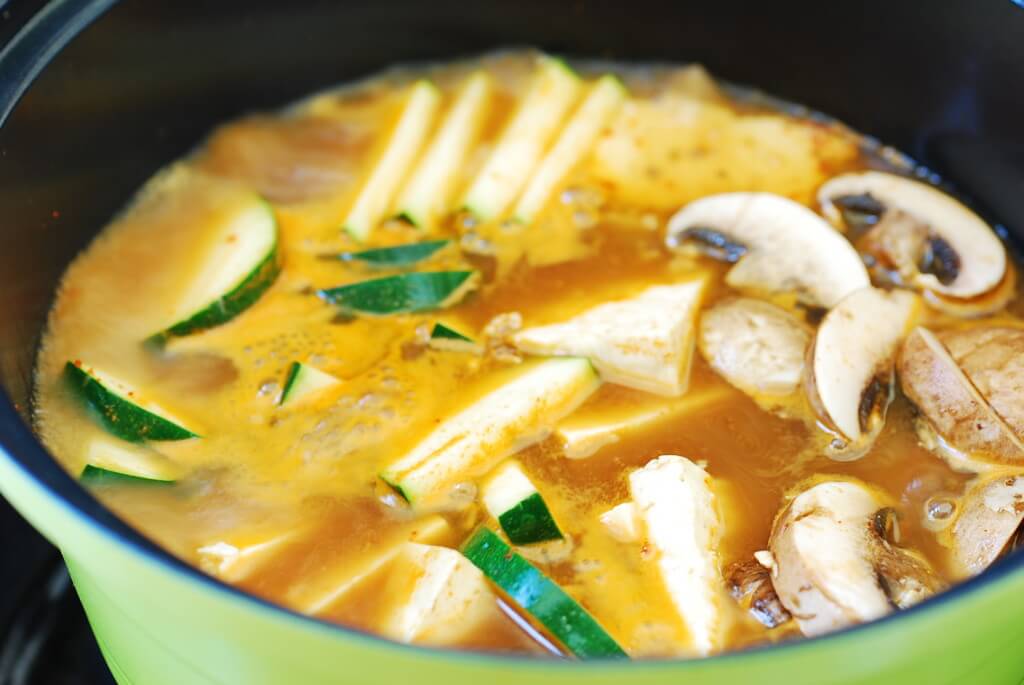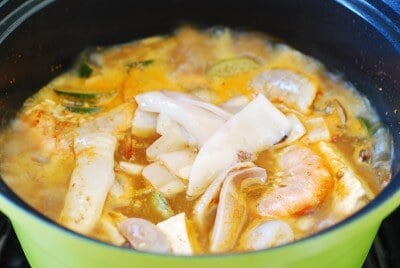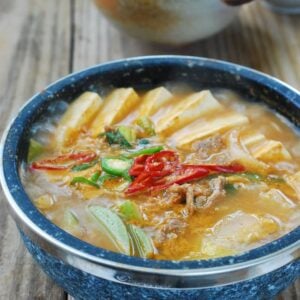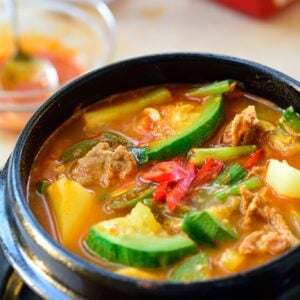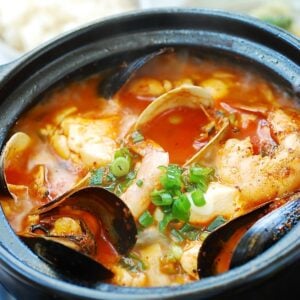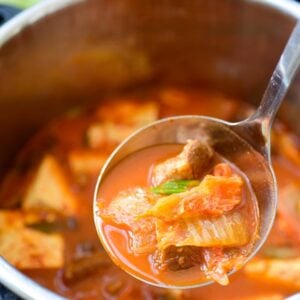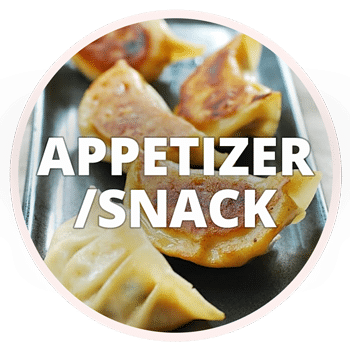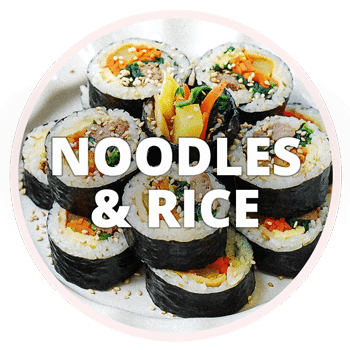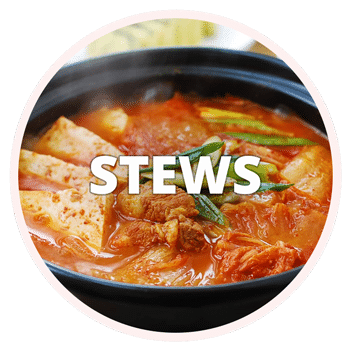This hearty and comforting doenjang jjigae is made with an assortment of seafood.
It’s been over 5 years since I last posted a doenjang jjigae(된장찌개) recipe, which is a staple stew made with fermented soybean paste, doenjang. It was a very basic doenjang jjigae recipe with fatty pork, but a popular one. Head over there if you like meat in your stew. This time, I made a variation made with seafood.
Any type of seafood can be added. The typical additions are clams, mussels, shrimp, squid, and oysters. You can use any one of these or a combination. Seafoods add a nice refreshing briny flavor to the stew.
The most important ingredient in doenjang jjigae is obviously doenjang. Doenjang is traditionally homemade, but most households buy commercially available doenjang these days. For many years, we were lucky enough to have doenjang that my mother-in-law made. It was the best doenjang! Now I make my own doenjang. When I’m out of my homemade doenjang, I usually resort to premium doenjang from Korea, but if none of these is an option for you, check out my Pantry Staples post for a major brand you can find at Korean markets or on-line.
We all know by now a good Korean stews are usually made with anchovy broth, and it doesn’t take much time to make it. Dry anchovies last a long time in the freezer. Doenjang jjigae is also commonly made with ssalddeumul (쌀뜨물), water from rinsing rice. Or you can simply use water. All the seafood in this recipe will give you a flavorful base for the stew.
A small trick you can use for doenjang jjigae is to use a small amount of vinegar at the end. It will brighten the doenjang taste, making the stew even more delicious!
For more Korean cooking inspirations, follow along on YouTube, Pinterest, Twitter, Facebook, and Instagram.
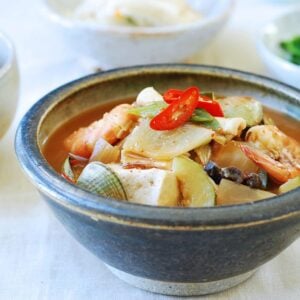
Ingredients
- 1 cup assortment of seafood I used a few small clams, 1/2 squid, and 5 medium shrimp
- 8 to 10 ounces tofu
- 1/2 medium zucchini
- 3 to 4 mushroom caps
- 1/4 medium onion
- 3 ounces Korean radish mu
- 1 chili pepper green or red
- 1 to 2 scallions
- 3 cups of anchovy broth or water see note
- 2 tablespoons doenjang (Korean soybean paste)
- 1 teaspoon gochugaru (Korean chili pepper flakes)
- 1 teaspoon minced garlic
- 1 teaspoon vinegar
Instructions
- Cut the tofu into 1/2-inch thick bite size slices. Cut the zucchini, onion, mushrooms, and radish into bite size pieces. Roughly chop the scallion, and thinly slice the chili pepper.
- Add the anchovy broth (or rice water or plain water), soybean paste and gochugaru to a small pot. Stir well to dissolve the soy bean paste. Add the radish and onion. Bring it to a boil over medium high heat, and cook for 3 to 4 minutes.


